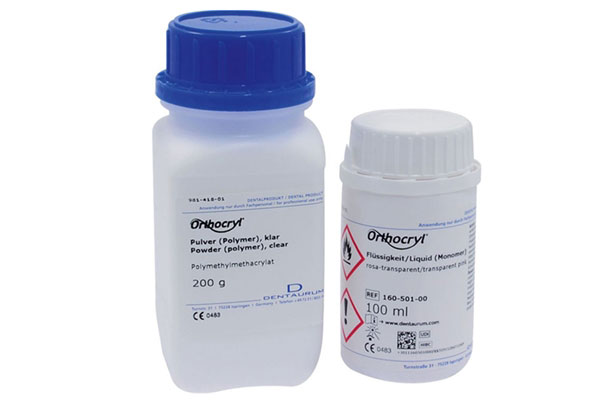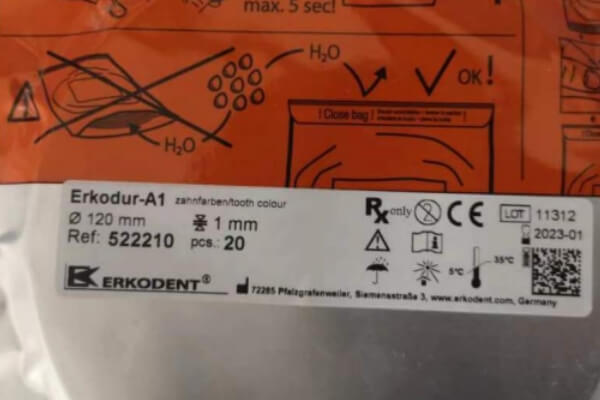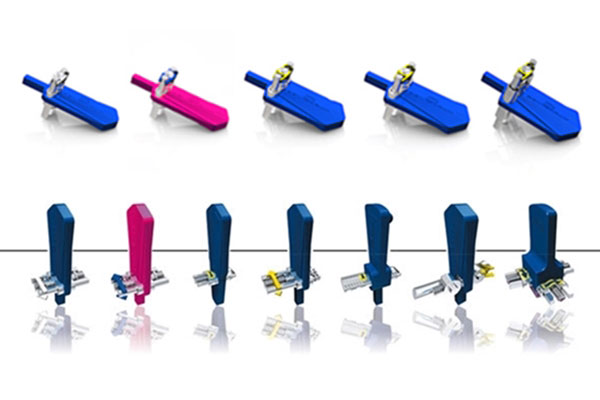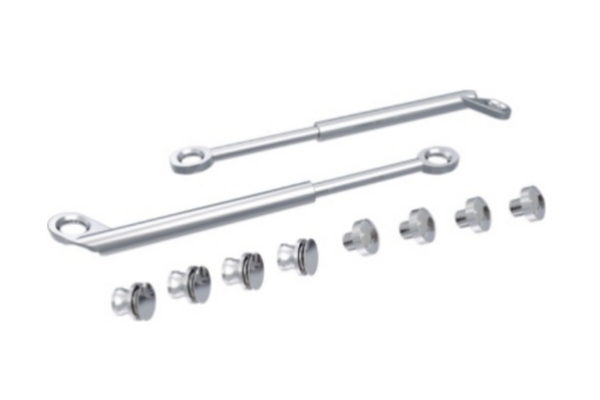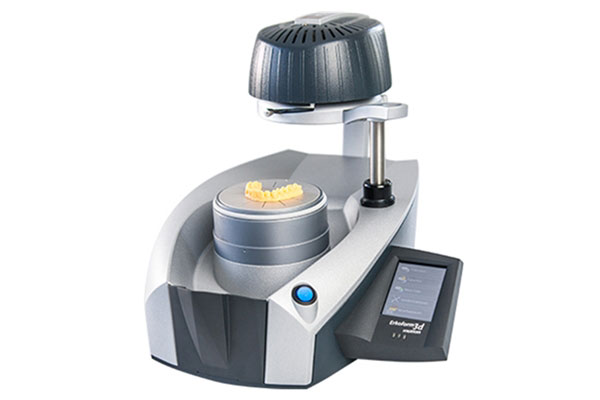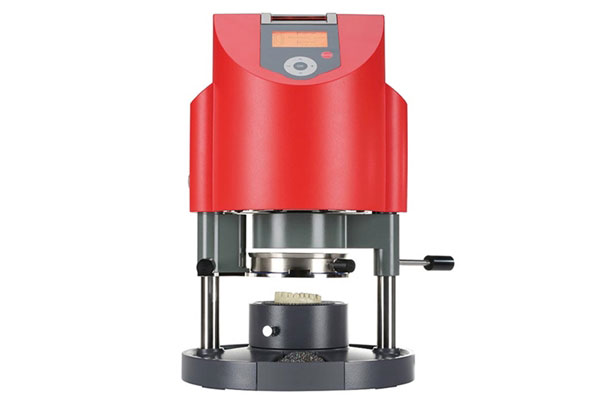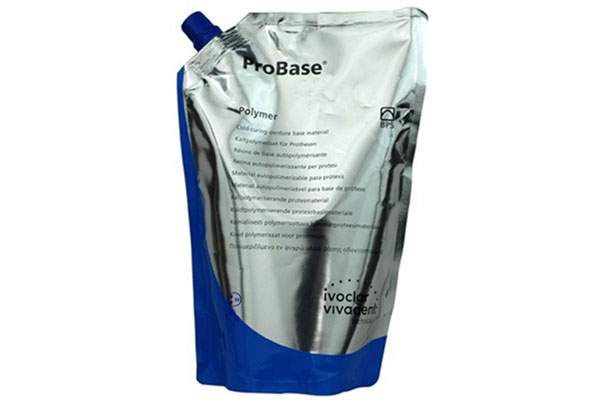Anti Snoring Appliance Lab from China
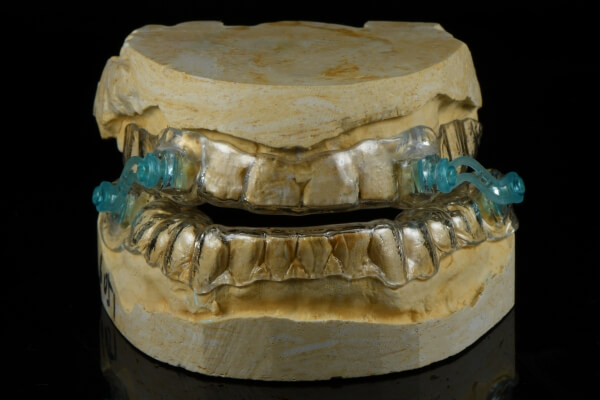
Robust Anti Snoring Appliance
Anti-snoring appliance is an effective device and a treatment to stop snoring. They work by pulling the lower jaw slightly forward. This changes the position and behavior of the muscles of the base of the tongue and jaw tissue so that they can no longer relax into the back of the throat. Besides, this clears the airway and eliminates snoring whenever the anti-snoring device is worn.
The anti-snoring appliance will allow you to sleep better and more peacefully at night. The custom-made anti-snoring device from Robust dental is comfortable to wear and helps to open the breathing passage with good results.
Featured Anti Snoring Appliance
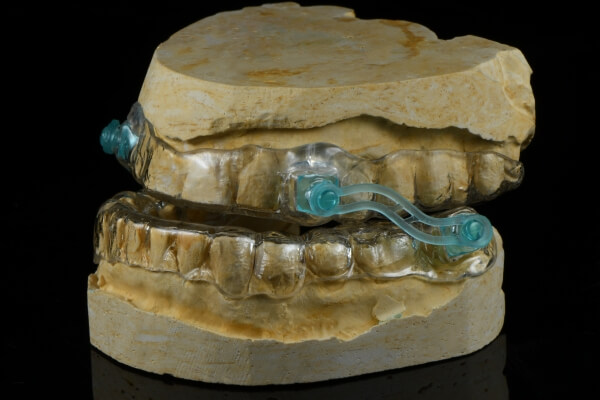
EMA Sleep Appliance
The EMA (Elastic Mandibular Advancement) sleep appliance is a type of custom-made oral device used in the treatment of snoring and sleep apnea. It’s designed to advance the mandible (lower jaw) slightly forward to keep the airway open during sleep, reducing snoring and helping with mild to moderate obstructive sleep apnea. The EMA device is adjustable and typically more comfortable than some other oral appliances due to its elastic bands, allowing for better jaw movement and adaptability. It’s often fitted by dentists specializing in sleep medicine after an assessment of the individual’s condition.
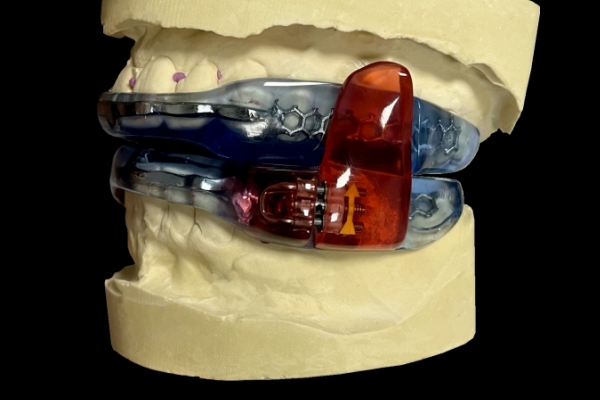
Respire Blue Sleep Appliance
The Respire blue sleep appliance, also known as Shark fin sleep appliance, is a type of mandibular advancement device (MAD) used in treating sleep-related breathing disorders, like snoring and mild to moderate obstructive sleep apnea. It’s personally designed to adjust the lower jaw forward slightly during sleep, helping to keep the airway open and reduce instances of airway obstruction. This device aims to improve breathing and overall sleep quality for individuals experiencing such issues. For better durability and strength, Robusy dental lab often suggests placing metal frameworks inside the appliance.
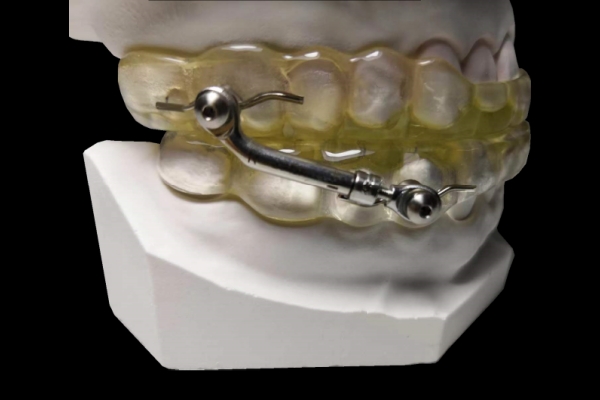
Herbst Oral Appliance
The Herbst oral appliance is a type of mandibular advancement device used in treating sleep-related breathing disorders, particularly obstructive sleep apnea (OSA). It’s a custom-made device that works by holding the lower jaw (mandible) forward during sleep, preventing the collapse of the airway and reducing instances of apnea or snoring. The Herbst appliance is adjustable and aims to provide comfort while effectively addressing sleep-disordered breathing. It’s fitted by dentists or healthcare professionals after an evaluation and is tailored to an individual’s specific needs.
Anti Snoring Appliance Lab Equipment & Material
Robust Anti Snoring Appliance Specification
| Product: | Anti-snoring appliance |
| Anti-snoring screws and parts: | Dentaurum from Germany |
| Anti-snoring resin: | Dentaurum from Germany |
| Herbst metal parts: | Dentaurum from Germany |
| Plastic sheet: | Erkodent from Germany |
| Vacuum forming machines: | Erkodent; Druformat |
| Way of manufacturing: | Thermoforming, Traditional way |
| Warranty: | 6 months |
Anti-snoring ApplianceFAQ Guide
1. What is the function of the anti-snoring appliance?
Snoring usually occurs during sleep when the muscles of the throat relax. Of course, when a person sleeps, the entire body relaxes, but when the throat muscles also relax, they block air passages. Snoring and difficulty breathing can occur.
One of the methods that can prevent snoring is an anti-snoring appliance. These anti-snoring devices are designed by dentists to control the position of the mouth while sleeping. These devices have been shown to be effective in reducing snoring. Anti-snoring appliances are called jaw advancement devices, and they prevent the tongue from sliding into the back of the mouth, preventing the jaw from loosening. The anti-snoring appliances also ensure that the soft palate tissue does not block the air passages. These appliances work just like dental braces, keeping the jaw in the correct position and allowing normal breathing. Anti-snoring appliances are made and fitted by a dentist, so the patient, doctor, and dentist should consult closely.

2. Advantages and disadvantages of custom-made anti-snoring appliances?
Individually manufactured anti-snoring appliances, also known as individually manufactured jaw thrusters, are not installed by the customer or patient but are individually designed by a dentist or dental technician based on the user’s dentition and snoring condition. To do this, your doctor will make a dental impression on your teeth and use it to make a anti-snoring appliance.
Mandibular Advancement Devices (MADs) feature a very precise fit. In addition, MADs can be better adapted to various peculiarities of mandibular position. This has a positive effect on the effect of the MAD and also makes it more comfortable to wear. In addition, MAD can be used to precisely set the degree of its progress.
The disadvantages of custom MAD are higher cost and lack of flexibility due to the need for customization. Once the MAD is manufactured, it cannot be re-installed through normal procedures. If the position of your teeth has changed, a new MAD is required. In some cases, users of MADs also claim that the anti-snoring appliance sticks too tightly to the teeth due to its very precise fit. Wearing them may be uncomfortable as a result.
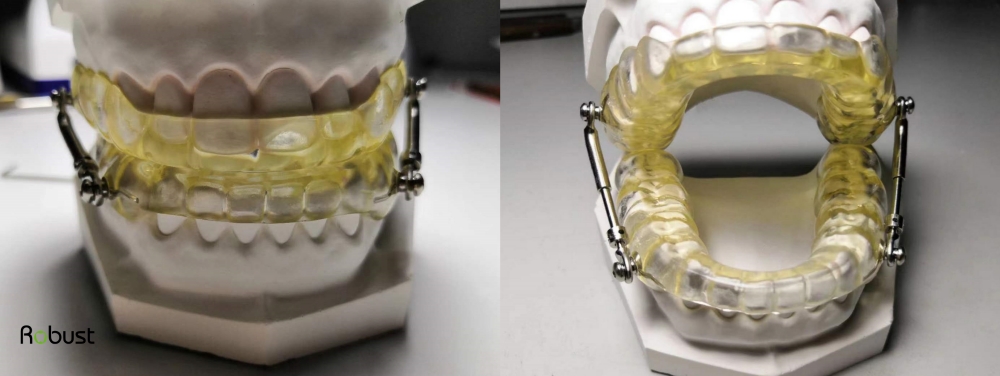
3. Why you may feel uncomfortable wearing an anti-snoring appliance?
Anti-snoring devices prevent snoring by applying gentle pressure to the jaw. These appliances, while effective, take some getting used to. At first, the wearer feels uncomfortable, but once you get used to it, the device provides pain relief. That said, some people cannot fit anti-snoring appliances because they are too uncomfortable and put too much pressure on the jaw and teeth. For these people, there are other methods, such as surgery, to prevent airway obstruction.
It must be remembered that anti-snoring appliances must be recommended by a doctor and fitted by a dentist, as these devices must fit your mouth shape. Adaptive devices do not require a doctor’s recommendation and can be purchased by anyone. But experts say those who buy the devices are only diagnosing their snoring, potentially ignoring underlying conditions like sleep apnea. Before purchasing an oral anti-snoring mouthguard, it is recommended to consult a doctor. So if you feel that your anti-snoring appliance doesn’t fit you, be aware that you might choose the wrong device. In this case, you need to consult your dentist about it.
4. What are the factors you need to consider for choosing an anti-snoring appliance?
Different anti-snoring devices are suitable for different people. Here are a few important things to consider when looking for an anti-snoring appliance.
Read about the anti-snoring equipment you think you want to buy. Read reviews from other users and check star ratings on sites like Amazon and third-party reviews. This can give you a better understanding of the product and whether it is suitable for other snorers.
Remember, if you choose an anti-snoring device that needs to be replaced frequently, the total cost will keep adding up over the years. A normal price of $20 for one piece of anti-snoring appliance can add up to hundreds of dollars a year.
The more common the anti-snoring device is, the more unbearable it is for people. Some people just aren’t used to sleeping with something on their face or mouth. Many devices inserted into the mouth can cause dental, gum, and jaw complications. So before deciding which type of anti-snoring appliance you want to buy, consult your dentist about possible uncomfortable conditions the anti-snoring appliance may cause.
When traveling, you need something easy to carry. Snoring doesn’t stop when you visit your parents or go on vacation. So it is very important to take the portability of the anti-snoring appliance into consideration.
- Transparency and Return Policy
Be sure to read the return policies of anti-snoring appliance manufacturing companies. If a company pays a lot of effort into creating its product, they offer consumers a risk-free product. There should not be any restocking fees or additional hidden fees. If a company offers a 100% money-back guarantee, free shipping, and returns, you can be assured that you won’t spend a penny unless it is really needed. Free-repairing also means that the company selling it believes in its product.
There are many types of products that can help you overcome snoring, be sure you choose the one that suits you best. And what you need to know is that different types of anti-snoring products are suitable for different people with different conditions. And these products do have distinctions. Of all the anti-snoring products, covering your nose with a nasal patch seems to be the easiest. All you have to do is glue it on and let it work while you sleep. However, this may only help those who snore due to blocked nasal passages. They may offer a partial solution, but keep in mind that snoring is caused by the collapse of tissue in the throat, not the tissue in the nostrils. So the patch may only work for people with tight nostrils. And choosing other types of anti-snoring appliances also need your careful examination of the product features.
The warnings from different anti-snoring devices, especially pillows, breathing patches, or mouth guards, are minimal. Anti-snoring appliances are big enough that suffocation is unlikely, and at best, you may experience mild skin irritation with sticky strips on your nose all night.
It’s important to recognize when you should see your doctor and when you should stop using over-the-counter medications if they don’t help reduce snoring for a period of time (one to two weeks). Snoring can become a problem if you’re breathing pauses while sleeping, gasping or choking at night, chest pain at night, insomnia, daytime sleepiness, brain fog, and headaches when you wake up. These are signs of obstructive sleep apnea and you should be evaluated by your doctor.
- Waste it may cause and its reusability
Some anti-snoring treatments are disposable products, such as pillows and chin straps. These are reusable and can last for years if handled properly. Other solutions, like nasal strips, are single-use, one-off treatments, like Band-Aids. They can be effective, but keep in mind that cost and waste will add up over time.
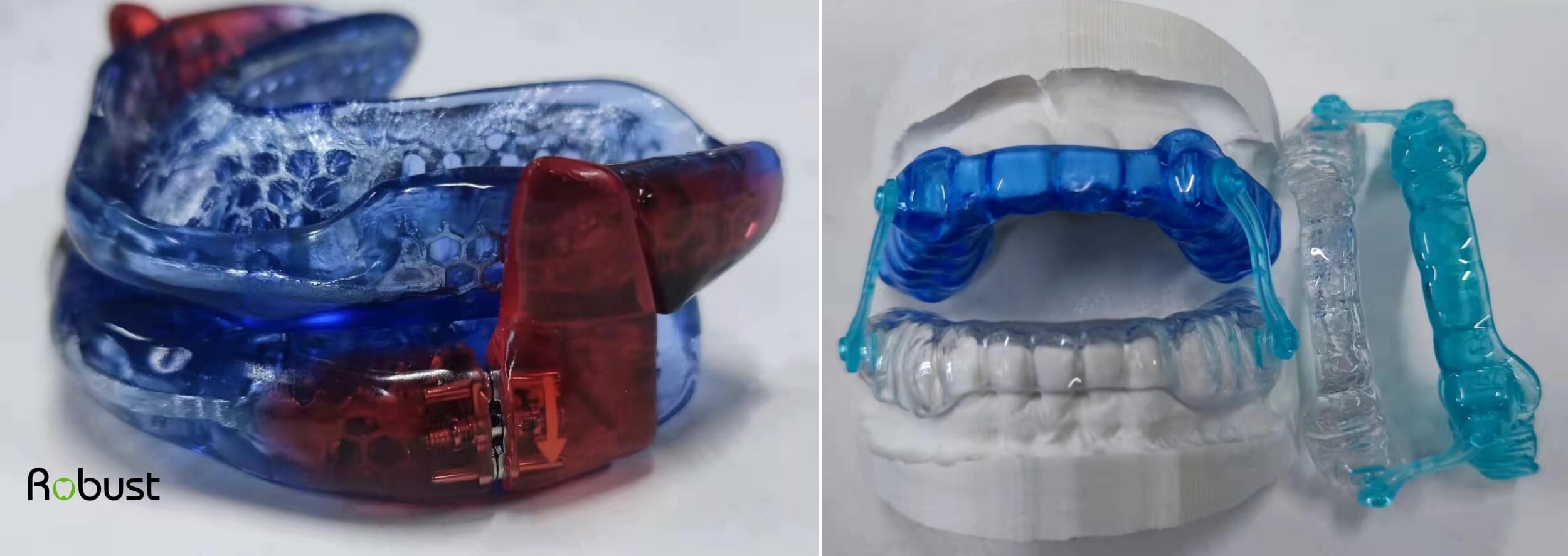
5. How long does the anti-snoring appliance last?
It depends on the type of equipment and frequency of use. Most anti-snoring devices are not expected to last more than a year. Some may last several years. Remember that the anti-snoring appliance may wear out due to erosion. This soft synthetic material for the mouth wears more easily than the solid material custom-made by the dentist. Plus, a custom-made anti-snoring appliance matches the contours of your teeth better than boil-and-bite braces. So the duration of a common anti-snoring appliance will be less than a custom-made anti-snoring appliance.
6. How to maintain the anti-snoring appliance?
An inevitable part of wearing an anti-snoring device is the need to clean it. Considering the average human mouth contains 800-1000 different bacterial strains, it’s easy to see why daily cleaning of your equipment is necessary. The inside of the mouth is dark, moist, and warm, creating the perfect environment for microorganisms to grow. If you store your anti-snoring device after every use, without washing or even rinsing it, it only takes 2-3 days and it will smell bad.
Advice on how to clean your anti-snoring appliance
Rinsing once a day is sometimes not enough to keep your anti-snoring device clean. Regardless of the type of anti-snoring device you have, here are some ways to clean your device (we recommend choosing an anti-snoring device based on your type of snoring):
- Baking soda and water (once a week) – Mix the two ingredients into a paste and apply to the entire device. After about three minutes, brush lightly on hard-to-reach areas. Wash away the paste with cold water.
- Vinegar and water (once a week) – Soak the device in a cup of white vinegar and water for 5 minutes. While the anti-snoring device is still submerged in water, brush thoroughly with a toothbrush. Cold water should be used to rinse off the vinegar.
- Toothbrush and toothpaste (every day) – take care of the equipment like you take care of your teeth. Brush your anti-snoring device lightly with a toothbrush and toothpaste after daily use. Rinse the device with water to remove excess toothpaste.
- Denture tablets(1 time/week)-Denture tablets usually come with written instructions according to the product brand. We recommend that you follow the instructions provided with each denture tablet sheet.
- Store in a cool, dry place (every day) – We recommend keeping the anti-snoring device in a safe place away from any pets or wet areas after cleaning the device thoroughly.
Things not to with your anti-snoring device
Some of the methods that are thought to clean the device can cause considerable damage. We recommend against using the following:
- Do not use bleach, alcohol, or other harsh chemicals – corrosive cleaners like bleach and ammonia would soak in the anti-snoring device and are difficult to remove. When these chemicals stay in your mouth overnight, they can damage your teeth and gums. Some may dry out the soft material, reducing its longevity.
- Don’t use boiling water or extreme heat – boiling water can sterilize bacteria, but it can warp or deform soft materials. Hot and boiling water is only available on your appliance to give a custom impression to your teeth when you first receive the appliance.
- Don’t use wipes or towelettes – many wipes on the market use chemicals that can damage your teeth and also your anti-snoring device, so these materials are not recommended.
- Do not let the anti-snoring appliances oak in water all day – your anti-snoring appliance should be stored in a cool, dry place. Besides, putting your anti-snoring appliance on a paper towel or napkin can cause you to accidentally throw it away.
What happens if I don’t clean my anti-snoring appliance regularly?
If you don’t clean your equipment as recommended, over time your anti-snoring appliance may start collecting bacteria, plaque, and tartar from your mouth.
This is a sign that your anti-snoring appliance needs cleaning:
- Discoloration
- Odor-produce a sour or bitter taste
- White Speck (Tart)
- Residues on the device
- It’s been over a week since the last cleaning
Daily cleaning of your anti-snoring appliance can prevent discoloration and odor in your anti-snoring appliance. If you don’t clean your anti-snoring appliance regularly, plaque may form on your anti-snoring appliance and become hard, making it difficult to remove.
Regularly cleaning your anti-snoring appliance is just as important as brushing your teeth. Promoting good hygiene can promote a healthier smile and extend the life of your equipment.
7. Is an anti-snoring appliance the same as a teether or sports mouthguard?
No, anti-snoring devices are different from teethers and sports mouthguards. The two may look and feel the same, but they work differently. Mandibular advancement devices do offer some protective value for those with bruxism or trismus. While mandibular advancement devices can prevent the damage caused by bruxism and teeth grinding, it is unclear whether they can prevent the consequences of occlusal teeth, such as jointing.
8. Do I need a doctor’s prescription for these treatments?
Some anti-snoring treatments are offered over the counter (OTC). Snoring nasal strips and sprays (not recommended by the authors of this article) are provided without medical advice. However, many mandibular advancement devices offered in the U.S. do require a doctor’s prescription because they are classified by the FDA as Class II devices.
Since most of these devices are regulated by the U.S. Food and Drug Administration, they are considered therapeutic devices. Worryingly, many people with more serious health problems, such as obstructive sleep apnea, may go undiagnosed or misdiagnosed and experience complications without clinician intervention. In general, it is recommended that you speak to your doctor and dentist before using these devices.
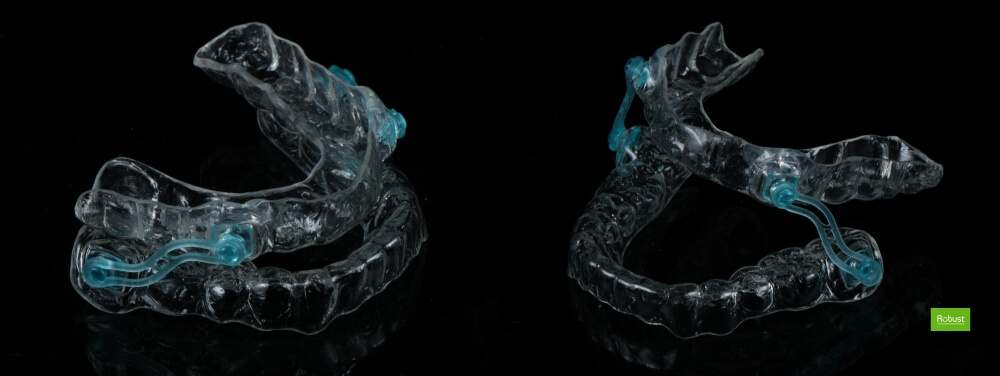
9. What’s the difference between an expensive snoring device and a cheap one?
Expensive snoring devices can often be tweaked and customized, which is why you’ll pay more for them. Additionally, many newer and more expensive devices avoid latex materials and plastics that contain BPA. Latex is problematic for people allergic to the material, and BPA is currently being studied because it is absorbed by the body. Most high-quality food containers and medical equipment avoid latex and BPA because of these possible risks. But cheap anti-snoring appliances due to their limited cost, often use these inexpensive and harmful raw materials that could cause health problems.
10. Can I use an anti-snoring mouth guard for sleep apnea?
Some snoring devices have FDA indications for the treatment of mild obstructive sleep apnea. You should not use a simple snoring device to treat sleep apnea unless with the cooperation of your doctor.
One of the risks of using a simple snoring device to treat sleep apnea is that the device does not adequately treat all breathing problems during sleep. Essentially, users run the risk of not being adequately treated. Daytime sleepiness in patients with obstructive sleep apnea increases the risk of heart attack, stroke, fatal arrhythmia, and accidents.
11. What if snoring persists while using an anti-snoring device?
Using an anti-snoring appliance does not guarantee that snoring will stop. While these options work for many people, they don’t work for everyone.
Also, what may work in the first year may not work in the second. If you find yourself continuing to snore with this device, take a look at this list of possible problems.
- Equipment usage: Make sure you are using the equipment properly. Make sure that the lower jaw moves forward relative to the upper jaw with the device in place. Your anti-snoring device may allow adjustments to optimize snoring reduction. Do not exceed specified adjustment instructions.
- Weight gain: Frequent snoring can increase with weight gain. If you gain, for example, 5 to 10 pounds (or even more), your device may not be as effective as before. Losing weight can certainly improve sleep and breathing. There is a lot of data showing a correlation between weight and snoring, as well as weight and sleep apnea.
- Drinking: Snoring is known to increase with alcohol consumption. Don’t drink alcohol for 4 hours before going to bed.
- Sleeping position: Snoring was also worse when sleeping on your back or on your back. Snoring can be reduced by sleeping on one side.
As mentioned earlier, snoring can also be a sign of sleep apnea. So if you feel that your snoring does not ease, you may learn about symptoms of apnea and check whether you have this illness as well.
